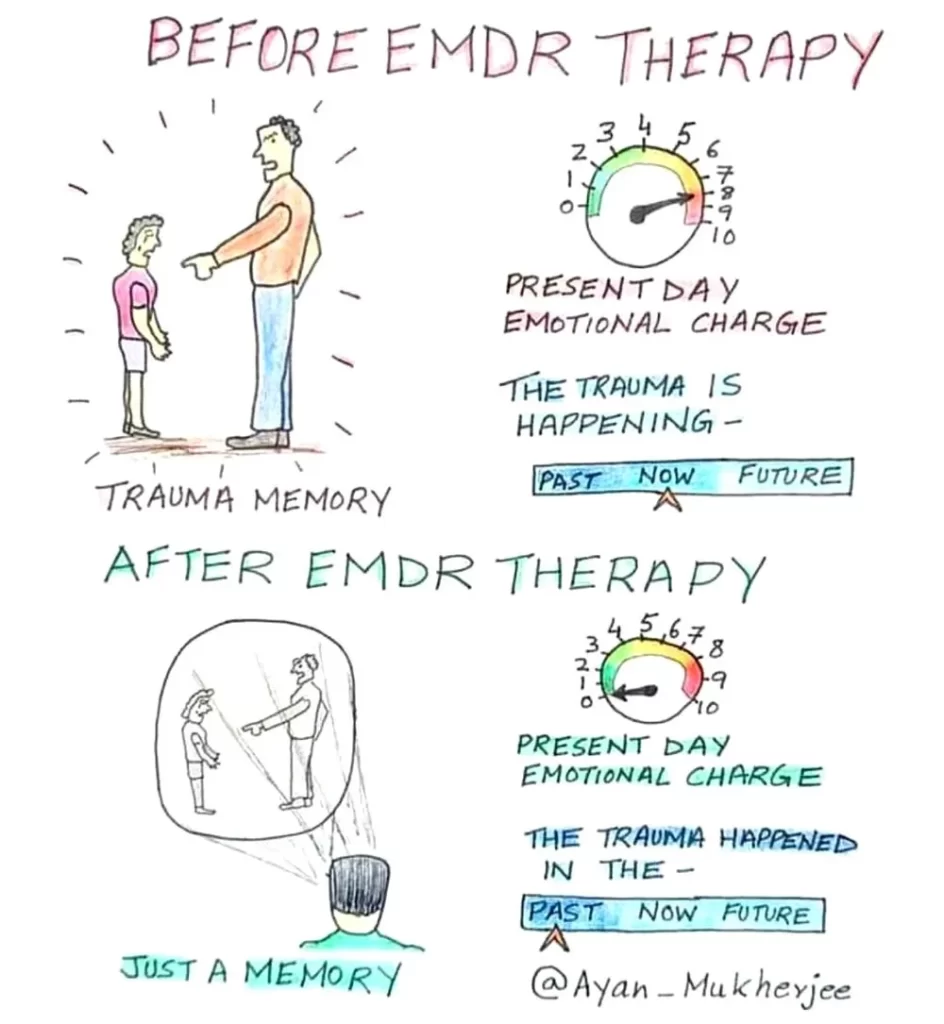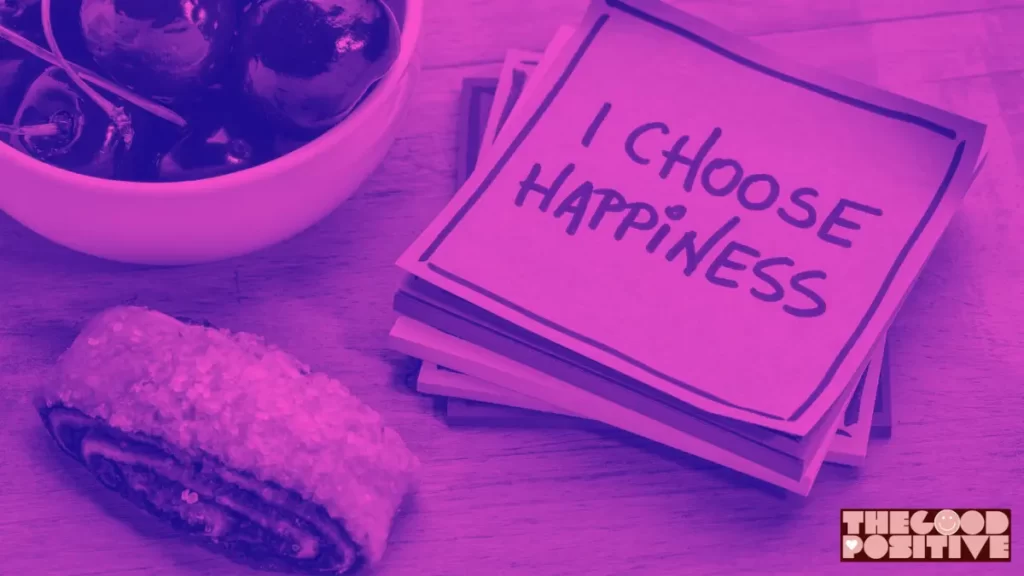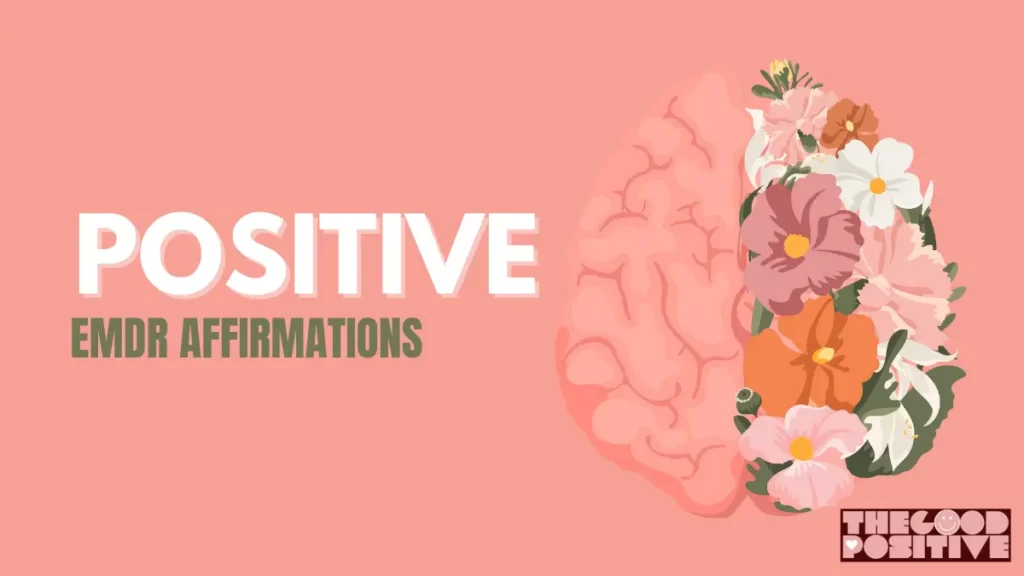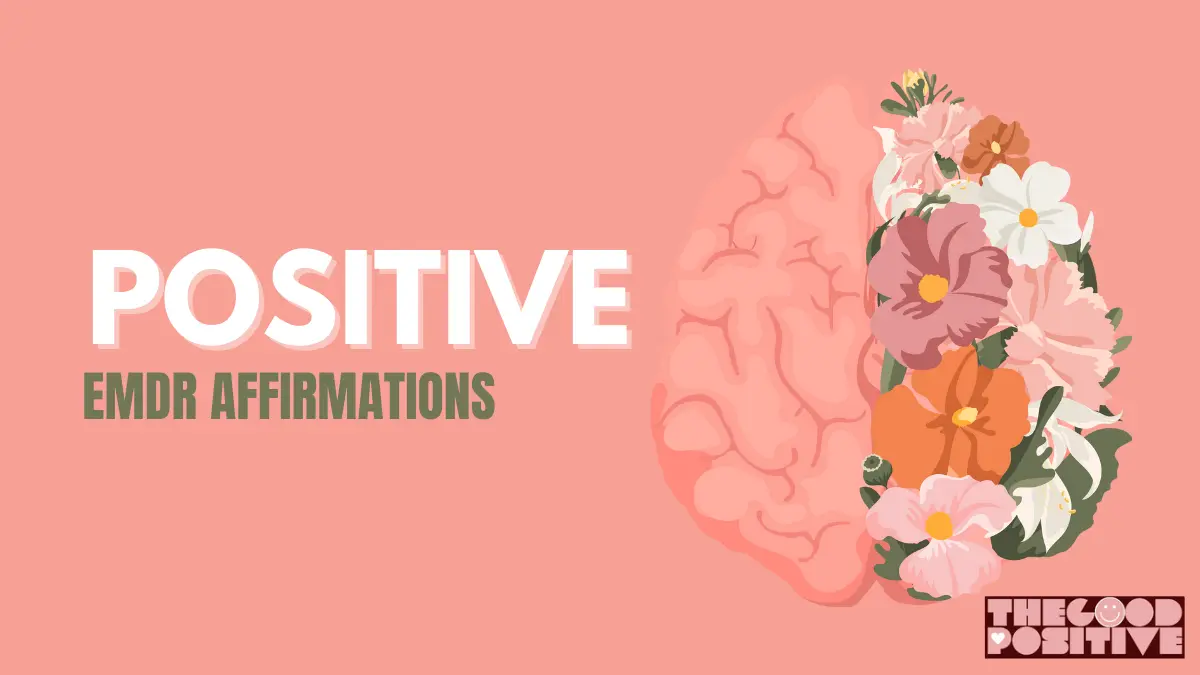Well, well, well! Today we’re talking about EMDR Positive Affirmations. For those of you who aren’t in the know, EMDR therapy is a type of psychotherapy that helps people deal with traumatic events. And what better way to deal with trauma than by throwing in some positive affirmations, am I right?
Now, I don’t know about you, but positive affirmations are my jam. They’re like a warm hug from a unicorn on a rainbow. They make you feel all warm and fuzzy inside, and who doesn’t love that?
But let’s get down to business. The benefits of positive affirmations during EMDR therapy are numerous. Not only do they help you focus on the positive aspects of your life, but they can also help reframe negative thoughts and emotions. Plus, they’re a great way to boost your self-esteem and confidence.
Now, let me give you a sneak peek at some of the 35 EMDR positive affirmations. We’ve got gems like “I am capable of handling anything that comes my way,” “I choose to let go of any negative beliefs about myself,” and my personal favorite, “I am a badass warrior who can conquer anything.”
So, if you’re feeling a bit down in the dumps or dealing with some tough stuff, why not give EMDR therapy with positive affirmations a try? It’s like a spa day for your brain. And who doesn’t love a good spa day?
Table of Contents
Understanding EMDR Therapy.

What is the Definition of EMDR therapy?
First things first, EMDR therapy stands for Eye Movement Desensitization and Reprocessing therapy. That’s quite a mouthful, isn’t it? But don’t worry, it’s not as scary as it sounds. In a nutshell, EMDR therapy is a type of psychotherapy that helps people deal with traumatic events.
The eight phases of EMDR therapy:
Now, let’s talk about the eight phases of EMDR therapy. Yes, you heard that right, eight phases. We’re talking more phases than a moon cycle here. But hey, who doesn’t love a good challenge?
- Phase one is all about history taking and building a relationship with your therapist.
- Phase two focuses on preparing you for the therapy itself.
- Phase three is where the real magic happens, as you identify the specific traumatic event you want to target.
- Phase four involves “desensitization,” where you use bilateral stimulation to process the traumatic memory. Phew, we’re only halfway through folks!
- Phase five is where you focus on installing positive beliefs and affirmations, which brings us nicely back to our first topic.
- Phase six involves body scan techniques to ensure that you’re not holding onto any residual tension.
- Phase seven is where you evaluate your progress.
- Phase eight is all about reevaluating and revisiting any residual issues.
How EMDR therapy works?
Now, you might be wondering, how does all this eye movement and stimulation work? Well, it’s based on the idea that our brains process information in a certain way. By simulating rapid eye movements, it’s believed that we can reprocess traumatic memories and emotions in a more adaptive way.

So there you have it folks, EMDR therapy in all its eight-phase glory. It’s like a rollercoaster for your emotions, but hey, who doesn’t love a good rollercoaster ride?
The Power of Positive Affirmations.
Alright, it’s time to get our positivity on with some good old-fashioned positive affirmations. You know what they say, “you are what you think,” and what better way to think positively than with some affirmation action?

What are positive affirmations?
So, what exactly are positive affirmations? They’re like little love notes to yourself, except you’re not just whispering sweet nothings in your ear, you’re actively reinforcing positive beliefs about yourself. It’s like a self-pep talk, and who doesn’t love a good pep talk?
How positive affirmations work?
But how do positive affirmations actually work, you may ask? Well, it’s all about rewiring those pesky negative thoughts that we all have. By repeating positive affirmations to ourselves, we’re essentially replacing those negative thoughts with positive ones. It’s like doing a mental switcheroo, and who doesn’t love a good old-fashioned switcheroo?
The science behind positive affirmations:
Now, let’s get down to the science behind positive affirmations. It’s been shown that positive affirmations can help boost our self-esteem, reduce stress, and even improve our physical health. That’s right, folks, we’re talking about a literal mind-body connection here.
So, the next time you’re feeling down in the dumps, why not try some positive affirmations? You can tell yourself things like “I am worthy,” “I am enough,” or my personal favorite, “I am a boss babe who can conquer the world.”
It’s like having a little cheerleader in your brain, and who doesn’t love a good cheerleader? It’s also like a mental hug from your best friend, and who doesn’t love a good hug from their bestie?
Recommended: 100+ Saturday Positive Affirmations.
35 EMDR Positive Affirmations.

Well, let’s ready to take charge of life with some EMDR positive affirmations! Congratulations, you’re one step closer to becoming a well-adjusted adult! Now, let’s get down to business. Here are 35 affirmations to choose from (because one or two just won’t cut it, right?):
List of 35 EMDR positive affirmations:
- I am strong and capable of healing.
- I am worthy of love and respect.
- I trust myself to handle any emotions that arise during therapy.
- I am grateful for the opportunity to heal and grow.
- I release all negative beliefs about myself and my past.
- I am safe in the present moment.
- I trust the process of EMDR therapy.
- I am open to receiving healing and positive change.
- I am in control of my thoughts and emotions.
- I am capable of overcoming any obstacles that arise during therapy.
- I forgive myself and others for past experiences.
- I am worthy of a happy and fulfilling life.
- I am deserving of self-care and self-compassion.
- I am grateful for my resilience and strength.
- I choose to let go of any trauma that no longer serves me.
- I am capable of creating a positive and healthy future.
- I am worthy of peace and inner calm.
- I am free from the negative effects of past experiences.
- I am capable of creating healthy boundaries in my relationships.
- I trust the wisdom of my body and emotions.
- I am grateful for the support of my therapist and loved ones.
- I am worthy of experiencing joy and happiness.
- I release all shame and guilt associated with past experiences.
- I am capable of living a fulfilling and purposeful life.
- I am grateful for the opportunity to heal and transform.
- I am worthy of feeling empowered and confident.
- I trust the journey of my healing and growth.
- I am capable of creating positive change in my life.
- I release all negative self-talk and beliefs.
- I am deserving of love and acceptance.
- I am free from the burdens of the past.
- I am grateful for the strength and resilience I have developed.
- I trust my ability to heal and overcome any challenges.
- I am capable of living a life filled with abundance and happiness.
- I am worthy of experiencing inner peace and calm.
How to use EMDR positive affirmations during therapy?
Now, I know you might be wondering, “What the heck do I do with all these affirmations?” Well, don’t you worry, my friend. You can use them during EMDR therapy, or even on your own, by repeating them to yourself during moments of stress or anxiety. They’re like little love notes to yourself!
The benefits of using EMDR positive affirmations:
And if you’re still not convinced, let me tell you about the benefits of using these affirmations. They can help reprogram negative thought patterns, build self-esteem and confidence, increase feelings of self-worth, and promote a more positive outlook on life. Plus, they’re free! Who doesn’t love a good bargain?
So go ahead, pick your favorite affirmations, and start repeating them like your life depends on it (because, let’s be real, it kind of does). And remember, always stay positive, my friend!
FAQs

Well hello there, curious minds! I see you’ve stumbled upon the Frequently Asked Questions (FAQ) section. I’m here to answer all of your burning questions about positive affirmations and EMDR therapy…with a side of humor, of course!
How long does it take for positive affirmations to work?
Ah, the million-dollar question. Unfortunately, there’s no one-size-fits-all answer to this. It really depends on the person and the situation. Some people might feel the effects of positive affirmations immediately, while others might need to repeat them for days, weeks, or even months to see results. But hey, at least it’s a cheap and easy way to give yourself a mental boost, right?
What is EMDR therapy?
EMDR therapy stands for Eye Movement Desensitization and Reprocessing therapy. It’s a type of therapy that helps people process traumatic memories and experiences. It involves following the therapist’s hand movements while recalling the traumatic event, which is said to help rewire the brain and reduce the emotional impact of the memory.
How effective is EMDR therapy?
Well, the good news is that EMDR therapy has been shown to be highly effective for treating PTSD and other trauma-related disorders. The bad news? It’s not a magic cure-all, despite what your friend’s cousin’s neighbor might have told you.
You’ll need to find a qualified and experienced therapist who can guide you through the process and tailor it to your individual needs. But hey, at least you’ll have a professional to talk to who won’t judge you for eating an entire pizza by yourself last night.
What are the side effects of EMDR therapy?
EMDR therapy is considered safe treatment with less side effects than those pesky pills for your sad and traumatic moments. It’s like a superhero, it maintains its effectiveness even after treatment ends!
But beware, it may cause some temporary side effects like reliving some painful memories, heightened emotions, feeling dizzy, and vivid dreams – no, not the ones where you win the lottery.
But don’t worry, it’s all part of the process, and your therapist will work with you like a superhero to help you overcome these symptoms. (source)
Can EMDR therapy be used for anxiety?
Oh yes, EMDR therapy isn’t just for PTSD anymore. It’s like that versatile kitchen gadget that can chop, slice, and dice with ease – except it’s for your brain. Anxiety disorders? Phobias? Other mental health issues? EMDR therapy can tackle them all! Who needs a Swiss Army Knife when you’ve got EMDR therapy, am I right?
How many EMDR therapy sessions are needed?
Again, it really depends on the person and the situation. Some people may see results after just a few sessions, while others may need more extensive treatment. Your therapist can give you a better idea of how many sessions you might need based on your individual needs.
What is the success rate of EMDR therapy?
Well, according to the experts (aka the studies), EMDR therapy has a pretty darn impressive success rate for treating PTSD and other trauma-related disorders. Some studies have reported success rates of up to 77%. That’s like hitting the jackpot on the first try!
But of course, every person is different, and success rates can vary depending on factors like the severity of the condition and how much coffee you’ve had that day. So don’t worry if your results aren’t quite as high as your friend’s – we won’t judge you (too much). (source)
What should I expect during an EMDR therapy session?
During an EMDR therapy session, you’ll be asked to recall a traumatic event while following the therapist’s hand movements or another form of bilateral stimulation. The therapist will guide you through the process and help you process the emotions and thoughts that come up. (Read more)
Can EMDR therapy be done remotely?
Yes, thanks to the wonders of modern technology, EMDR therapy can be done remotely through video conferencing platforms like Zoom. Just make sure you have a good internet connection and a quiet, private space to work in. (Read more)
Who is a good candidate for EMDR therapy?
If you’ve experienced a traumatic event or are struggling with symptoms of PTSD or other trauma-related disorders, you might just be a perfect candidate for EMDR therapy. It’s like finding the perfect pair of shoes – they just fit right and make you feel like a million bucks.
Of course, we’re not saying EMDR therapy will solve all your problems, but it’s definitely worth talking to a qualified therapist to see if it’s the right fit for you. And who knows, maybe you’ll come out of it feeling like Cinderella with her glass slipper. (Just don’t lose it at midnight.)
Is EMDR therapy covered by insurance?
In many cases, yes! EMDR therapy is recognized as an evidence-based treatment for PTSD and other trauma-related disorders, so it’s often covered by insurance. However, it’s always a good idea to check with your specific insurance provider to see what’s covered under your plan.
Conclusion
In conclusion, EMDR positive affirmations are like a double shot of espresso for your mind. They give you that extra boost of confidence and self-love, without the jitters or crash. With EMDR and positive affirmations, you’ll be unstoppable, like a caffeinated superhero, ready to take on the world (or at least your to-do list).
So don’t be afraid to give it a try, and let those positive affirmations work their magic. Just be careful not to overdo it, or you might end up with a case of positive affirmation-induced insomnia. Remember, everything in moderation, even positivity!

Aldvin is the proud owner of “thegoodpositive.com.” A passionate writer and supporter of body positivity. Advocate of plus-size fashion. He’s mission is to curate the latest trends and timeless fashion for plus size women. He wants to inspire confidence and creativity through fashion, helping curvy women express their unique personalities with every outfit.

